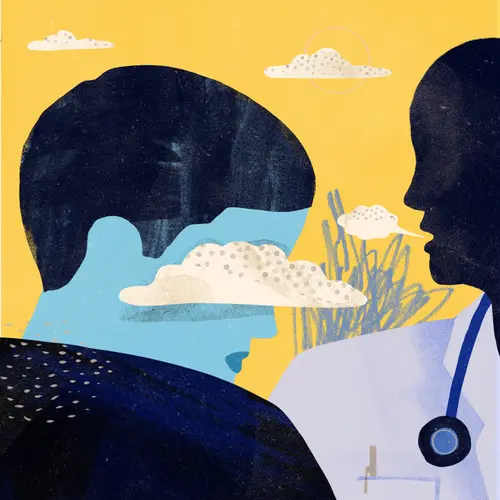Maybe you notice your knees start to ache when you're out on your morning run. Or perhaps you now get pain and cramps in your hand when you chop vegetables as you prepare dinner. Could it be a sign of osteoarthritis, you wonder?
Pain in one or more of your joints is the classic symptom of this condition. Usually it starts to hurt when you use the joint or right after you wake up. The pain also often gets worse at the end of the day.
Some other symptoms you may get:
Stiffness. You may notice this the most in the morning or after you've been sitting for a while.
Hard to move your joint. You may hear your doctor say you have less "range of motion," which means you can't move as much or as easily as before, especially right after resting.
Swelling. The area around your joints gets puffy, especially after you use them. You may also notice bumps that form on your joints.
Noises. You may hear a crunching sound from pieces of bone rubbing on each other.
Locking up. Your joints, especially hips or knees, lock up or buckle under you. You may also lose your balance at times and feel weak in your muscles.
How Is Osteoarthritis Diagnosed?
There is no single test that tells you that you've got osteoarthritis. Instead, your doctor will ask you about your symptoms and medical history. They'll also do a physical exam to see how well your joints work and may order an X-ray or another imaging test.
See your doctor as soon as you notice unusual symptoms so you can get started on treatment. Your primary care doctor may suggest you see a rheumatologist, an expert in joint health, or an orthopedic surgeon for possible replacement, especially if your arthritis is advanced.
When your doctor asks you about your symptoms, they'll look for specific things that point to osteoarthritis, such as:
Pain in your knees and hips. Osteoarthritis often attacks these joints, along with your hands and spine. Your shoulder, elbow, wrist, and ankle can also get arthritis, but this is less common.
Hurts when you move. Your doctor will want to know if your joint pain gets worse the more you exercise, but better when you rest.
More painful at night. They'll ask if your joint pain gets worse in the evening.
Stiffness in your joints first thing in the morning. This usually lasts half an hour or less.
They'll also ask when you first noticed the problems, how long they've been going on, and if they changed over time. They'll want to know about other medical problems you may have, any illness or accidents that might have caused the pain, medications you take, and if members of your family have osteoarthritis.
Your doctor will check how strong your joints are, how well they move, and if there are any bumps or swelling that might suggest a problem. They may poke and prod a little to see if there are any areas that are painful or tender.
Sometimes this is enough to make a diagnosis, especially if you're over 45, but there are other tests your doctor may order:
X-rays. They can show signs that you've lost cartilage in your joints, although usually the images only pick this up when your osteoarthritis is advanced.
Magnetic resonance imaging (MRI). It can see damage in your cartilage, tendons, and other parts of the joint.
Joint aspiration. Your doctor takes fluid out of the joint with a needle. Examining the fluid can tell you if your pain is from a bacterial infection or uric acid crystals (gout).
Could It Be Something Else?
Osteoarthritis can also be mistaken for psoriatic arthritis, an autoimmune disorder that affects some people who have psoriasis.
Symptoms can also be confused with gout, hemochromatosis (when your body has too much iron), arthritis caused by an infection, and tendonitis (when a tendon is inflamed).
Osteoarthritis symptoms can also sometimes be mixed up with those of rheumatoid arthritis. Both conditions cause joint pain and make it difficult to move, but there are also key differences:
Where it hurts.Rheumatoid arthritis usually affects many joints at once and usually the same ones on both sides of the body. Osteoarthritis sometimes only happens in one joint.
How long you feel stiff. The morning stiffness of rheumatoid arthritis usually lasts longer than 30 minutes. With osteoarthritis, it's 30 minutes or less.
When your symptoms act up.Stiff joints are more common in rheumatoid arthritis and get worse after resting. In osteoarthritis, joints feel worse after they've been working.
Why it happens. Osteoarthritis is caused by age and overuse, while rheumatoid arthritis is an autoimmune disease, which means your immune system -- your body's defense against germs -- attacks your body. This can cause symptoms like fatigue, fever, weight loss, and lack of appetite, along with the joint pain and stiffness.
Blood test results. If you have rheumatoid arthritis, blood tests may show antibodies that are not there if you have osteoarthritis.

